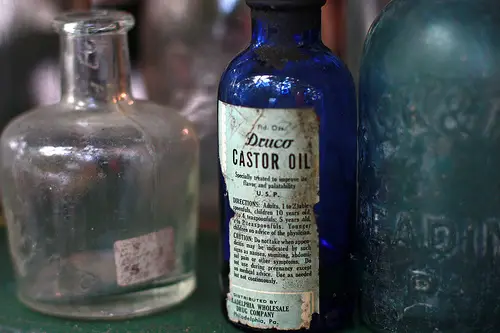
Photo by [tiverylucky] FreeDigitalPhotos.net
Anyone that is the slightest bit interested in watching what they eat will be familiar with Trans Fat and Saturated Fat.
July 2003 marked a turning point for the Food and Drug Administration as they announced that all nutrition labels would need to include not only the total fat and saturated fat, but the trans fat as well.
But it wasn’t too long ago they were looking at combining both trans fat and saturated fat together and showing it as one number on the Saturated Fat line.
There must be a reason these two types of fat carry a different name. So let’s take a look at the differences between trans fat and saturated fat.
The Chemistry Behind Trans and Saturated Fat
Trans fat and saturated fat have one distinct difference, and that’s the amount of hydrogen atoms that is contained in each. Now we’re going to go into a little chemistry flare here, just to help understand the difference in the two on a molecular level.
Every molecule of fat is built from strings of carbon atoms. These carbon atoms are a nesting place for hydrogen, because hydrogen can easily bond to the carbon atoms. So keeping this in mind, let’s take a quick look at saturated fats.
In saturated fat, each carbon atom is joined by as many atoms of hydrogen as it can possibly handle. This is why it gets it’s name, “Saturated”, because it is unable to link to any more hydrogen. So I bet you’ve already figured out what Unsaturated fats are, right? Yep, they have much less hydrogen connected to their carbon atoms. So where does this leave trans fats? Well, trans fats are caught somewhere in between the saturated and unsaturated fats, as far as the amount of hydrogen atoms they are compiled of.
Trans fats are actually created when an unsaturated fat is partially hydrogenated, this means that a small number of hydrogen atoms have connected to the carbon, but it’s far from saturated. But here’s where it gets it’s name. During this partial hydrogenation, the fat molecules are bent into oddly formed shapes known as trans configurations, thus the name “Trans Fats”.
The Properties of Trans and Saturated Fats
As far as the shelf life of these fats go, the partially hydrogenated and saturated fats can be kept a lot longer than the unsaturated fats. The reason for this is pretty simple. The extra hydrogen atoms not only raise the fats melting point, but also makes them much more stable while at room temperature.
Trans fats on the other hand are a little softer than their saturated cousins, a good example of this would be to compare margarine with butter. But in the eye of the producer, creating a product that contains trans fats rather than saturated fats will make it seem as though they’re selling a healthier product. This is because any saturated fats would have to be listed on the nutrition label. Pretty sneaky huh?
But the real question is still there, is trans fat or saturated fat better for you? Nutritionists are still in debate over this question, they are quite similar in many ways.
Both trans fat and saturated fat will increase your LDL (low-density lipoprotein), this is what’s known as your “bad cholesterol” level. What happens is the LDL will take the cholesterol from your liver to the rest of your body, from there it can clog up your arteries and possibly cause heart disease.
But there is also a “good cholesterol” level (high-density lipoprotein), and this will help to balance out the LDL. This HDL actaully transports cholesterol back to your liver. So how does all this mix with the trans and saturated fats?
Saturated fats will actually increase your cholesterol, both your LDL and HDL will increase. But the trans fats only raise your LDL, at the same time lowering your HDL. And as you know, if there isn’t enough HDL to counteract the LDL, this may be dangerous to your health.
The effects on your cholesterol are not the only dangers to consuming trans fats. It’s been discovered that trans fats may also increase your risk to cancer and diabetes. Not only this, but for pregnant women, these trans fats could possibly cause you complications.
Trans Fat or Saturated Fat, What’s in Your Diet?
Have you ever wondered why there isn’t any recommended daily allowance listed for Trans Fats? Well after reading this post it should be quite clear. Any levels of trans fat may be hazardous to your health, therefore the Food and Drug Administration can not give you an allowance for this stuff.
If you’re interested in reading about some of the myths concerning margarine vs. butter, check out my related post Do you Like Plastic on your Toast? Some pretty interesting stuff…
Do you consume a lot of Trans Fats during your day? Or have you committed to only going the Saturated Fats route?



ohhhhhhh…….how can this happened i am not aware about this thing basically all the diet plan and about fat i studied lot….i was just how i missed such informative from my reading. Thanks for sharing. Mainly its easy to understand just because of difference.
Yah it all starts to make sense once you see what the differences are in the different fats. I hope this has helped you in regards to your diet plan and thanks for stopping by.
ok saturated fat is included in food because it’s already their saturated fat is animal fat. and unsaturated i believe is plant fat like vegatable oil which isn’t as bad for you.
I believe you’re right Martin, most vegetable oils contain unsaturated fats. If we wanted to get really deep into this we could begin breaking all this down into Polyunsaturated, Monounsaturated etc. It’s just easier for me to read the labels and be aware of the dangers involved with consuming too much trans fats. Why do they make things so difficult? I just like to eat…lol
Good to know! I always just assumed saturated fat was all bad but it can be good in moderate amounts.
Well, the saturated fats are definitely the more healthy alternative. I should think it would be quite hard to eliminate fats entirely from your diet. But at least keeping a close eye on the trans fats and avoiding them when possible is a good first step to healthier eating.
superb article ! all point are amazing but the middle of writing can be more nice or suitable !!!
all the best
Thank you for the feedback, and thanks for stopping by.
you provide trans fat information so detail … 🙂
I knew that trans fat is bad for health, but not for the atoms information before…
I just hope my diet now is not containing trans fat anymore …
Great I wish you the best on your diet. Watching your trans fat intake is pretty important in my opinion
There are a few inaccuracies in this article. You wrote, “Trans fats are actually created when an unsaturated fat is partially hydrogenated, this means that a small number of hydrogen atoms have connected to the carbon, but it’s far from saturated.” Actually, trans fats are created when one of the two hydrogen atoms on the same side of a carbon double bond is shifted to the opposite side. This straightens the fatty acid molecule because the atomic charge is balanced. When enough unsaturated fatty acids become either saturated or converted to the trans configuration to achieve the desired viscosity, the hydrogenation process is stopped to prevent the fat mass from becoming fully hydrogenated. A fully hydrogenated fat mass has the consistency of candle wax. A fat that stiff is not suitable for baking.
Suggest you read “Know your Fats” by Mary Enig, PhD.
Thank You David for elaborating on the creation of trans fats. This is the kind of info I need from my readers to enhance the research I’ve done. I love it when folks take interest enough to contribute valuable information that is helpful to everyone. Thanks again for an excellent comment!
nicely describes the difference between trans and saturated fat.they are looking both are same but there is a some difference.
To the untrained eye, trans ans saturated fats seem to be one in the same. But health wise, it’s a totally different story. Thanks for reading!
Great infos Robert. Thanks a lot for sharing the describes the difference. I Want to learn more about fats. Waiting to get more article from you. Niky
Thanks Niky, I’m glad you found this post informative.
Another reader suggested checking out the book “Know your Fats” by Mary Enig, PhD
You could probably find a world of information on fats there.
Very realistic your describes the difference between trans and saturated fat.
Thanks for explaining this, am off to research some more!
You’re welcome David. If you find anything interesting to add to the discussion, please feel free to come back and share with us!